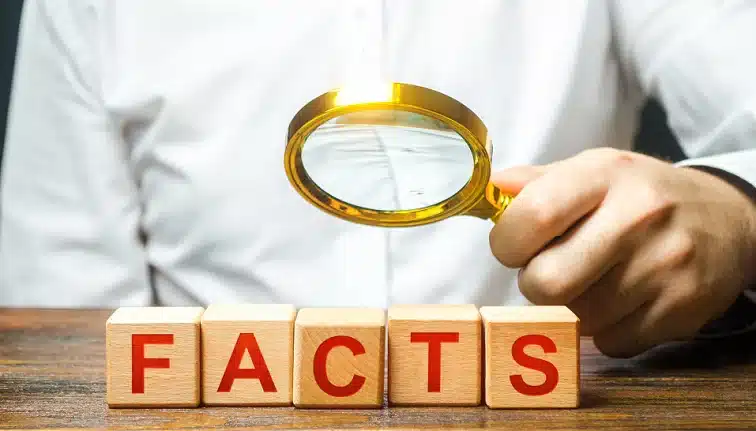Medical misinformation has been studied extensively in health communication and cognitive psychology. Dr Debanjan Banerjee looks at various factors that contribute to the snowballing of fake news, with latest perspectives from the COVID-19 outbreak.
A young mother from Thoubal district in Manipur, a state in northeast India, travelled almost 100 km to get the miracle medicine that can save her only son from the fatal flu, supposedly spreading fast and claiming countless lives. Like her, several villagers are crowding ‘coronavirus treatment centres’ in rural districts to get life-saving remedies.
Our mental health team recently visited Imphal – the capital city of Manipur – and the neighbouring districts as part of a collaborative project with the Manipur Government on adolescent suicide prevention. Though not under the direct purview of mental health, our team was shocked to see the panic-stricken faces, the apprehension about an unknown illness, and the overwhelming distress to obtain medicines, with no scientifically proven efficacy. In fact, many of the villagers did not even know the name of the virus. They were oblivious to the fact that the outbreak was far away, with minimal cases reported in India so far.
Ground realities
Many opportunist pharmacists – not belonging either to modern or traditional Indian medicine genre – are blatantly selling medications with unknown composition, claiming to cure for coronavirus. They are labelled under ‘Ayurveda’ or ‘Homeopathy’, though the experts in the respective fields have vehemently denied these claims.
Over the last two months, following the outbreak of COVID-19 and World Health Organization (WHO) declaring it as a global health emergency, people all over have been panic-stricken. With around 72,000 affected in China alone and few hundreds more in 25 countries worldwide, COVID-19 has claimed innumerable lives so far. Though 80 percent of these infections are said to be mild and the mortality around two per cent (much lesser than the similar strain-borne illnesses like SARS or MERS), the fact is that ‘an unknown illness without a definitive cure spreading unchecked’ causes fear among the human population.
It is a well-researched fact that during any public health crisis, there’s an immense and immediate need for credible information and effective crisis communication. The spread of information and the target audience can have a critical impact on people’s understanding and interpretation of the outbreak. Incomplete understanding, partial or biased interpretation, hearsay, rumour-mongering and insufficient communication are the main ways that give rise to health-related misinformation. We know this from our past experience with similar outbreaks, whether it was tuberculosis, Ebola or swine flu.
Spreading misinformation
There’s a certain price we pay for being social beings. This includes the continued sharing of misperception. Like the Aesop’s fable where a boy starts chasing a crow after hearing from a stranger that the crow has his ear, we all tend to follow lucrative and hope-generating information in times of fear and crisis, irrespective of the authenticity of evidence.
With reference to COVID-19, we are increasingly witnessing cases of panic, anxiety and even obsessional fear of people contracting the illness, without clinical symptoms. Some are avoiding any form of travel leading to financial consequences. Chronic stress is a major killer and can not only create more confusion but also lead to propagation of misinformation.
Health-related misinformation has been studied extensively in health communication and cognitive psychology. Let’s look at some perspectives as to why the snowballing of fake news occurs:
*False but commonly held beliefs
A message on social media that ginger and turmeric can cure COVID-19 went viral after an accidental text. Although, it is a commonly held belief that ginger anti-viral properties, there is no evidence about its effectiveness in fighting coronavirus.
*Generalisation of other false beliefs to the current crisis
A common false belief is that the consumption of hot water helps combat multiple illnesses. Not surprisingly, it is wrongly believed that hot water can kill COVID-19.
*Theory of negativity bias
The prohibition or negation of certain acts is often accepted as preventive measures. For instance, decreased consumption of chicken or seafood has led to a marked reduction in their sales. This is more acceptable as a preventive strategy to most people than wearing masks or maintaining good hand hygiene.
*Modelling of rumour
Following a hearsay or rumour becomes a learned behaviour for the fear of social deprivation. If a majority of members in one’s social network are doing something, it’s easier to blindly follow them.
*Over-analysis and faulty interpretation of science
Phenyl/cresol/autoclave is known to kill viruses. The same logic is being used for coronavirus without any evidence. Also, there are half-baked theories about reptiles and birds spreading the virus.
*Motivated reasoning
Human beings, usually, accept things in keeping with their culture and traditions. For instance, Indians are more likely to believe that herbal remedies made of Tulsi (holy basil) and Triphala (Ayurvedic herbal formulation) are effective, even if there’s little scientific evidence to support the claim. Similarly, religious or local customs often compound the practices related to the disease outbreak.
*Fear-reasoning
Human beings fear the ‘unknown’ or ‘uncertain’. In such cases, the anxious mind cooks up its own remedies and tends to accept the most irrational or logically bizarre facts. That explains why antibiotic sale has increased considerably due to self-medication and prescriptions, even though they have no efficacy against COVID-19.
*Boomerang effect of social media
Hundreds of fake videos about the outbreak in India, mass burials in China, virus spreading through cattle, etc. on various social media platforms bear testament to the perils of senseless sharing. Conspiracy theories like coronavirus being used as a biological weapon or bio-waste may make for stimulating debates, but eventually they add to the global panic and hysteria.
All said and done
It is vital to remember that in a global crisis the best strategy is to rely on authentic sources of information like international or national health agencies/platforms and refrain from any sharing/discussion of fake news. If each of us takes the onus of verifying the credibility of any health information and debunking misinformation with facts and credible sources through relevant platforms, the world will be a better place.
This is our collective responsibility. Together, let us fight medical misinformation just as we are fighting the COVID-19 outbreak!
(The author Dr Debanjan Banerjee is a Geriatric Psychiatrist at NIMHANS, Bengaluru and also a member of First Check, an award-winning fact-checking initiative of Health Analytics Asia. )

















